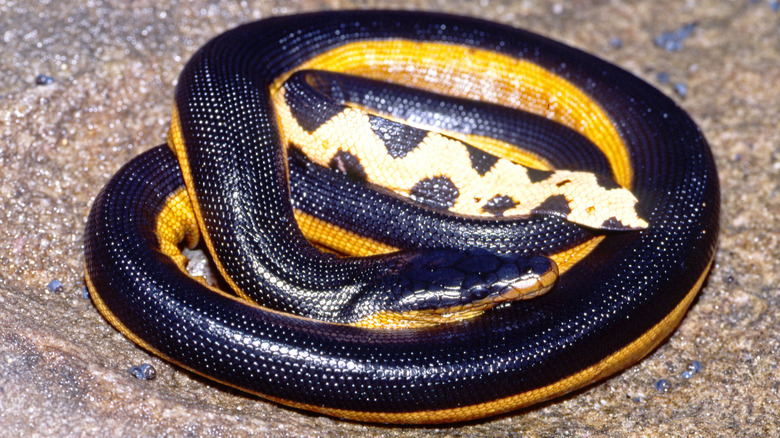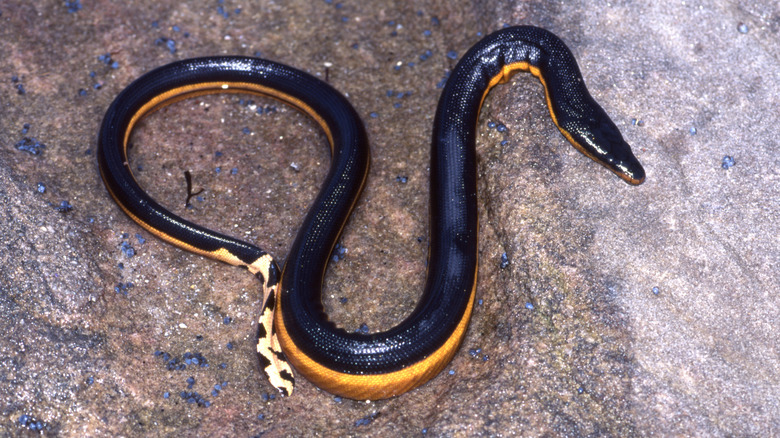Hawaii Is Free Of Dangerous Snakes, Except For This 1 Extremely Venomous Species
Snakes have developed a bad rap pretty much since the beginning of time, and Hollywood accentuates it with films like "Snakes on a Plane" and "Anaconda." With around 600 venomous species that could kill or seriously harm a human, encountering one in the wild would certainly make you pause in your tracks, especially if you're hiking with your dog.
If you'll be trekking in Hawaii any time soon, however, you won't have to worry too much about any snakes slithering across your path, or finding the largest snake ever discovered on it. That's because no native species live on this mountainous island chain, due to its fragile, isolated ecosystem. However, snakes still live in the Aloha State. The good news is, there's only one venomous species to be concerned about: the yellow-bellied sea snake.
As the name reveals, you're more likely to spot this two-colored reptile in the open water around Hawaii than on land, if you see one at all. The yellow-bellied sea snake wears the crown as the most widespread snake species in the world. These reptiles can be found in the Pacific Ocean, Indian Ocean, the eastern coast of Africa, and the western coast of Central America, but they're not common in Hawaii. A few have made some appearances recently though.
The yellow-bellied sea snake has been spotted in Hawaii three times in seven months
Despite being deemed a rare snake to see on the island, there have been three encounters in less than a year. The first was reported by a swimmer at Wailea Beach in Maui on July 7, 2024. Another was reported two weeks later that washed ashore on Waimanalo Beach in Oahu. The third yellow-bellied snake, which measured 3 feet long, ended up on Honolii Beach in Hawaii on February 4, 2025.
Unlike other snakes, this species has no need to be on land; it can survive entirely in water, but sometimes they can get washed up onshore after strong winds or currents. Officials believe these environmental factors are what caused the Honolii Beach sighting on the shoreline. A beachgoer found the surprise snake pinned under a log and notified lifeguards, who then contacted the Hawaii Department of Agriculture's Plant Quarantine Branch.
How dangerous are yellow-bellied sea snakes to humans?
While these popular sea snakes may look threatening, they're usually not aggressive toward humans, unlike black mambas and vipers. In fact, they're considered a docile species compared to others — maybe docile enough that you'd want the snake as a pet, though, since they're highly venomous, you don't want to handle them. Yellow-bellied sea snakes inject deadly venom to immobilize their prey or as a means of self-defense if they feel threatened, but they rarely strike humans.
If the snake were to bite a human, the symptoms would include some combination of severe pain at the bite site, vomiting, swelling, and muscle weakness. Breathing difficulties and paralysis could also occur, and without immediate anti-venom treatment, the bite could be deadly. Keep in mind that yellow-bellied sea snakes are rare in Hawaii waters and rarer on land, but if you happen to encounter one during a swim or stroll on the beach, keep your distance. Don't give it a reason to attack you, and call the Department of Agriculture toll-free pest line at 808-643-7378.


